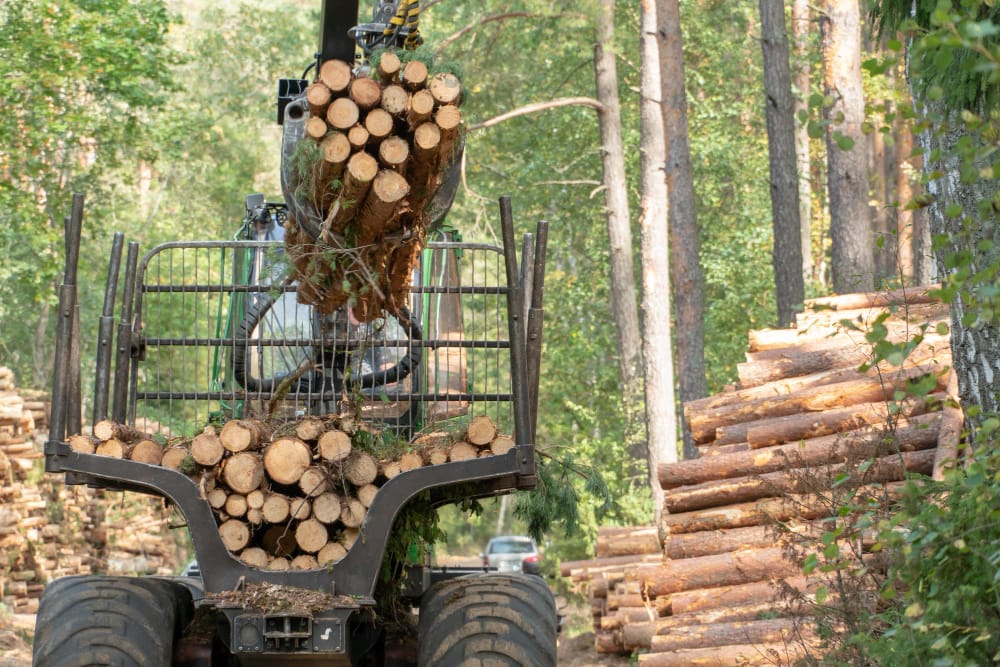Last updated on
If you’re diving into the world of green construction, sourcing ethical wood suppliers is crucial. But how can you ensure your wood is coming from responsible sources?
This guide will provide tips to help you make informed decisions, ensuring your building projects align with your commitment to sustainability and ethical practices. Let’s dive in and unlock the secrets of green building.
Research Certification Standards

Researching certification standards is a fundamental step in finding ethical wood suppliers. This will ensure you only work with companies who handle sustainably sourced timber with an ecological consciousness in mind.
Certification bodies, like the Forest Stewardship Council (FSC) or the Programme for the Endorsement of Forest Certification (PEFC), impose strict sustainability and ethical practices on their members. They ensure the wood is harvested responsibly, considering both environmental impact and the well-being of local communities.
By understanding these standards, you can evaluate if a supplier’s practices align with them. This proactive approach not only guarantees your wood is sourced ethically but also shields your green building project from potential reputation damage associated with unethical wood sourcing.
Therefore, familiarizing yourself with certification standards is an effective gateway to a network of wood suppliers committed to environmental stewardship and social responsibility.
Verify Chain of Custody

Verifying the chain of custody (COC) is a key method to ensure the ethical sourcing of wood. This certification tracks the journey of timber from the forest, through each stage of processing and distribution, until it reaches the end consumer.
This comprehensive tracking system ensures that the wood is legally and sustainably harvested, and respects the rights of workers and local communities.
By demanding COC certification, you are promoting transparency in the timber industry and discouraging illegal and unsustainable practices. Thus, verifying COC is an indispensable step in identifying ethical wood suppliers, helping you uphold your commitment to sustainability in your green building project.
Assess Sustainability Practices

You can always see if a company is meeting all your standards by the practices that they apply. These could be the following:
- forest management and certification
- chain of custody
- selective logging and reforestation
- habitat conservation
- waste reduction and recycling
- energy efficiency
- carbon offsetting and emissions reduction
- community engagement
- fair labor practices
- water conservation and protection
- transparent reporting
- education and outreach
Assessing the sustainability practices of potential wood suppliers provides a comprehensive evaluation of their commitment to ecological and social responsibility. It reveals whether their operations respect forest ecosystems, reduce waste, promote energy efficiency, and uphold fair labor practices.
This assessment helps identify suppliers whose values align with ethical sourcing, ensuring your green construction projects support environmental preservation and social justice.
Check for Transparency and Documentation

Making sure the company is honest and can provide all the necessary documents is crucial in finding ethical wood suppliers. It involves assessing a supplier’s openness regarding their sourcing practices, including the origin of their timber, the methods of harvest, and their interactions with local communities.
Detailed documents serve as evidence of a supplier’s adherence to ethical practices and their commitment to sustainability.
They may include certificates from recognized bodies, reports on sustainability initiatives, and even third-party audits. This transparency allows you to verify a supplier’s claims about their ethical sourcing. Moreover, it fosters trust and reliability, ensuring you’re partnering with a company that respects and champions sustainable and ethical standards.
Request References and Recommendations
References and recommendations can be an invaluable tools in your quest to find ethical wood suppliers. These references could come from other businesses or professionals in the green construction industry who have had direct dealings with these suppliers.
Their firsthand experiences shed light on the supplier’s adherence to ethical and sustainability standards in practice, beyond what’s stated on paper.
Recommendations, on the other hand, can steer you towards suppliers with a proven track record of ethical sourcing, solidifying trust in your supply chain. In essence, references and recommendations provide real-world validation of a supplier’s commitment to ethically sourced wood.
Visit the Facilities
Seeing your potential wood supplier in person allows you to witness firsthand their operations and sustainability practices. It gives you a unique perspective on their commitment to ethical sourcing, beyond what is mentioned in certifications or reports.
During a visit, you can observe their logging methods, the condition of their forests, their dedication to reforestation, and waste management, and their engagement with local communities.
It also provides an opportunity to interact with the staff, giving you insights into their working conditions and labor practices. Thus, a facility visit is a practical, on-the-ground method to assess if a supplier’s practices truly match your sustainability and ethical standards.
As you continue your quest for ethical wood suppliers, remember the importance of sustainability and transparency. Every step taken towards ethical sourcing contributes to a healthier planet and fairer society. In your hands lies the power to build a sustainable future through your green construction projects. Keep striving for the best practice in every choice you make.
Related reading:
Table of Contents





